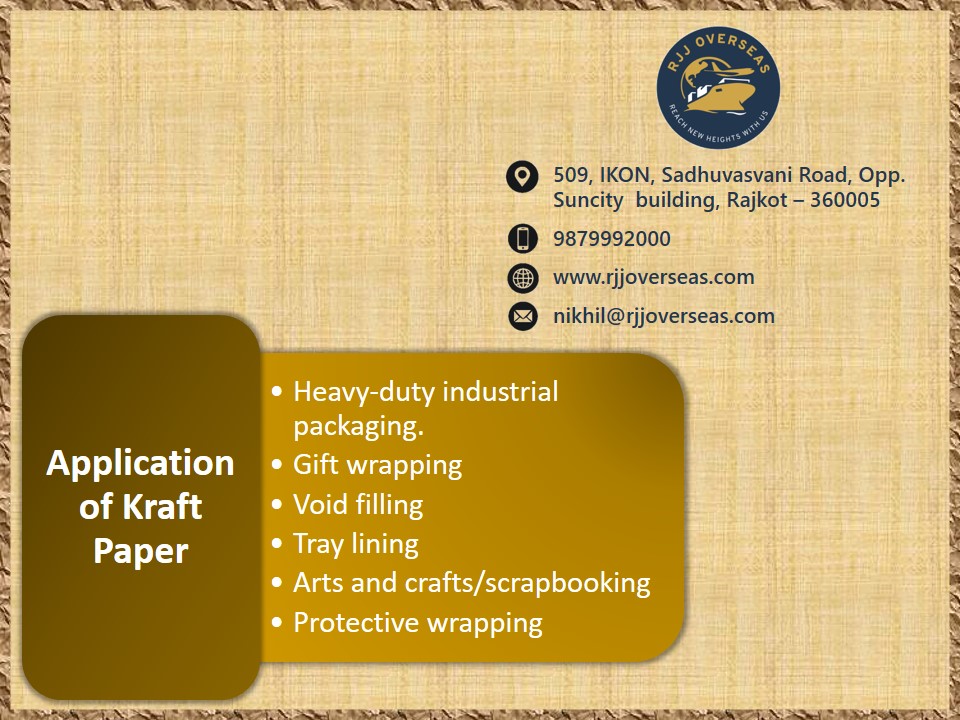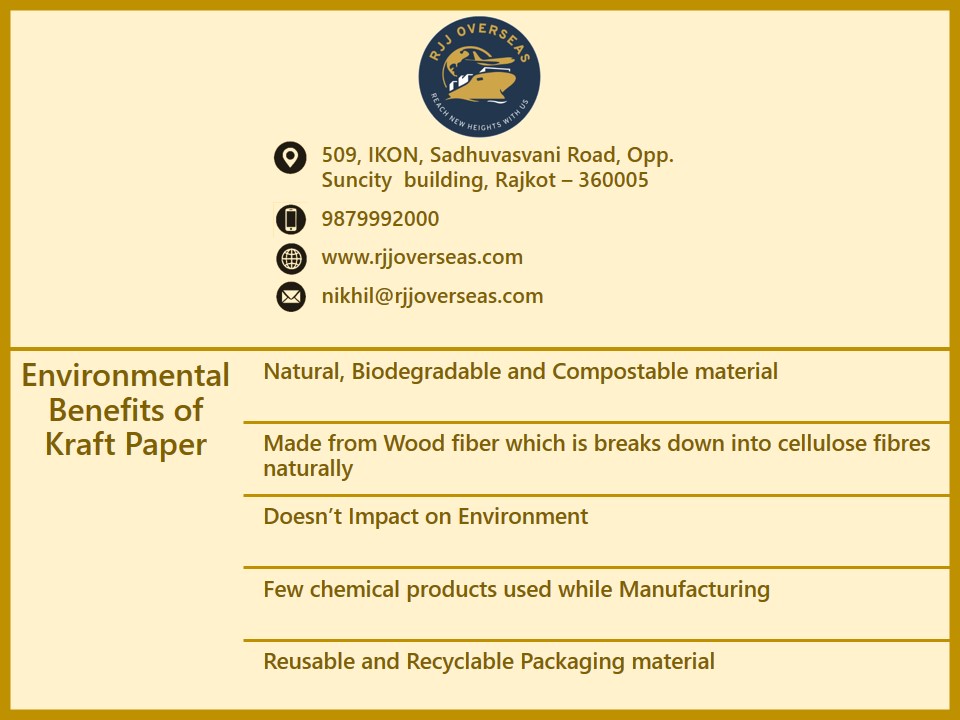Introduction:
The importation of coated white top liner and test liner for packaging purposes presents significant environmental advantages. This blog examines how importing these materials, particularly from the UK and beyond, contributes to sustainable growth. While emphasizing the environmental benefits, it also recognizes the interests of importers, including cost-effectiveness, corporate social responsibility, and access to specialized products. The exploration aims to showcase the dual advantages of importing these materials while promoting environmental stewardship and business success.

Environmental Benefits of Coated White Top Liner and Test Liner:
Reduced Deforestation:
Importing coated white top liner and test liner reduces the demand for virgin fibers sourced from forests, which leads to several environmental benefits:
a. Preservation of Natural Habitats: The production of virgin fiber-based materials often involves logging activities that contribute to deforestation. By using recycled materials such as coated white top liners and test liners, the demand for virgin fibers decreases, reducing the pressure on forests and helping to preserve natural habitats.

b. Biodiversity Conservation: Forests are home to a wide range of plant and animal species. By reducing deforestation, the use of recycled materials helps protect biodiversity by maintaining the ecosystems and habitats that support various organisms.
Energy and Water Conservation:
Imported coated white top liner and test liner often undergo recycling processes that require less energy and water compared to the production of materials from virgin fibers. This conservation has several advantages:
a. Reduced Energy Consumption: Recycling paper and cardboard fibers generally require less energy compared to the production of virgin materials. By using recycled coated white top liner and test liner, the overall energy demand for manufacturing decreases, leading to a lower carbon footprint and reduced reliance on fossil fuels.
b. Water Preservation: Recycling processes typically consume less water compared to the production of materials from virgin fibers. Importing recycled coated white top liners and test liners helps conserve water resources, which is particularly important in regions facing water scarcity or where water-intensive industries pose environmental challenges.
Reduced Greenhouse Gas Emissions:
The importation of recycled coated white top liner and test liner contributes to the reduction of greenhouse gas emissions, offering significant climate change mitigation benefits:
a. Carbon Sequestration: By recycling paper and cardboard products, carbon stored in the fibers is effectively sequestered, preventing it from being released into the atmosphere as carbon dioxide (CO2), a major greenhouse gas. This helps to mitigate climate change by reducing the overall carbon footprint associated with the production of packaging materials.
b. Lower Emissions from Production: The recycling processes for coated white top liner and test liner generally produce fewer greenhouse gas emissions compared to the production of materials from virgin fibers. Importing recycled materials leads to a decrease in emissions from manufacturing, contributing to global efforts to mitigate climate change.

Waste Reduction:
By importing recycled coated white top liner and test liner, the amount of waste sent to landfills is reduced, promoting a more sustainable waste management system:
a. Extended Material Lifespan: Recycling extends the lifespan of materials and diverts them from landfills. By utilizing recycled coated white top liner and test liner, these materials are given a second life, reducing the need for new products and the associated environmental impacts.
b. Sustainable Waste Management: By reducing the amount of waste sent to landfills, importing recycled materials supports sustainable waste management practices. It helps minimize the environmental and health risks associated with landfilling and promotes the circular economy by encouraging the reuse and recycling of materials.
UK as a Source of Coated White Top Liner and Test Liner:
Established Recycling Infrastructure:
The UK has a well-developed recycling infrastructure that supports the production of high-quality recycled coated white top liner and test liner, meeting international standards:
a. Collection Systems: The UK has efficient and widespread collection systems for paper and cardboard waste. This allows for the effective collection of used materials, ensuring a steady supply of feedstock for recycling facilities.
b. Sorting and Processing Facilities: The country has invested in advanced sorting and processing facilities that can effectively separate different types of paper and cardboard, including coated white top liners and test liners. This enables the production of high-quality recycled materials suitable for various applications.
c. Capacity for Large-Scale Recycling: The UK's recycling infrastructure has the capacity to handle significant volumes of paper and cardboard waste, making it capable of meeting the demand for recycled coated white top liners and test liners in both domestic and international markets.
Stringent Environmental Regulations:
The UK implements strict environmental regulations, ensuring that imported materials, including coated white top liner and test liner, adhere to sustainable practices:
a. Environmental Standards: The UK has stringent regulations in place to monitor and control the environmental impact of waste management and recycling processes. This ensures that the production of recycled materials meets high environmental standards, reducing potential risks to ecosystems and human health.
b. Sustainable Supply Chains: Importing coated white top liner and test liner from the UK provides assurance to importers regarding the quality and eco-friendliness of the products. The adherence to strict environmental regulations assures importers that the materials have been produced sustainably, aligning with their own environmental commitments.
Innovation and Research:
The UK invests in research and development, leading to advancements in recycling technologies and making their coated white top liner and test liner a preferred choice for importers seeking sustainable solutions:
a. Technological Advancements: The UK's investment in research and development has led to advancements in recycling technologies for paper and cardboard, including coated white top liners and test liners. This results in improved recycling processes that yield higher-quality materials with better performance characteristics.
b. Sustainable Packaging Solutions: Through innovation and research, the UK is at the forefront of developing sustainable packaging solutions. This includes exploring alternative coatings and treatments for white top liners and test liners that enhance their recyclability and reduce their environmental impact.
Beyond the UK: Exploring Global Import Opportunities:
Diversification of Supply Chains:
Importing coated white top liner and test liner from various countries ensures a diversified supply chain, reducing the risk of disruptions and enabling importers to access a wider range of sustainable products. By sourcing from multiple regions, importers can mitigate the impact of potential supply chains disruptions, such as natural disasters or political uncertainties in a particular country. Additionally, diversification allows importers to tap into different markets and take advantage of unique capabilities and expertise offered by various suppliers.
Local Market Considerations:
Exploring import opportunities from different regions allows importers to tailor their sourcing strategies based on factors such as cost, quality, and regional demand dynamics. Different countries may offer competitive pricing or specialized production capabilities that align with specific market requirements. By considering local market factors, importers can optimize their supply chain, ensuring they obtain the best value and meet the specific needs of their customers.
Exchange of Best Practices:
Importing from different countries facilitates the exchange of best practices, fostering innovation and continuous improvement in sustainable packaging solutions. Each country may have unique approaches to recycling, waste management, and sustainable production processes. By engaging with suppliers from diverse regions, importers can learn from their best practices, innovative technologies, and environmental initiatives. This knowledge-sharing promotes collaboration and drives advancements in sustainable packaging, benefitting the entire industry and supporting global environmental goals.
Meeting Importer Interests:
Cost-effectiveness:
Importing coated white top liner and test liner from the UK and beyond can offer cost advantages through competitive pricing and efficient supply chains:
a. Competitive Pricing: Importing from different countries allows importers to compare prices and choose suppliers offering competitive rates for coated white top liner and test liner. This enables cost savings and enhances profitability.
b. Economies of Scale: Importing from regions with well-established recycling infrastructure, such as the UK, often results in efficient supply chains and economies of scale. Suppliers in these countries can produce large volumes of high-quality recycled materials, reducing production costs and offering competitive pricing to importers.
c. Cost-efficiency in Transportation: Importers can optimize transportation costs by selecting suppliers located in strategic regions or close to major shipping routes. This reduces logistics expenses and improves overall cost-effectiveness.
Enhanced Corporate Social Responsibility:
Importing sustainable packaging materials, such as coated white top liner and test liner, aligns with corporate social responsibility goals, improving brand reputation and consumer perception:
a. Environmental Stewardship: By importing materials produced from recycled fibers, importers demonstrate their commitment to environmental sustainability. This resonates with consumers who increasingly prioritize eco-friendly products and sustainable business practices.
b. Positive Brand Image: Incorporating sustainable packaging materials in the supply chain enhances a company's brand image, portraying it as socially responsible and environmentally conscious. This can attract environmentally conscious consumers and differentiate the brand from competitors.
c. Meeting Regulatory Requirements: Importing materials that meet stringent environmental regulations demonstrates compliance with sustainability standards, ensuring the company adheres to local and international regulations related to waste management and environmental protection.
Access to Specialized Products:
Importing coated white top liner and test liner from different regions provides access to unique product offerings, allowing importers to cater to specific market demands and differentiate themselves from competitors:
a. Customization Options: Different regions may offer specialized variations of coated white top liner and test liner, such as specific coatings, thicknesses, or surface treatments. Importing from diverse sources enables importers to select products tailored to their specific packaging requirements and target markets.
b. Market Differentiation: By importing unique products, importers can differentiate themselves in the market. Offering specialized coated white top liners and test liner gives them a competitive edge by providing packaging solutions that meet the specific needs and preferences of their customers.
c. Innovation and Product Development: Importing from different regions fosters innovation and promotes product development. Suppliers in various countries may have different approaches to coatings, treatments, or other packaging technologies, allowing importers to access cutting-edge solutions and stay ahead of industry trends.
Conclusion:
Importing coated white top liner and test liner from the UK and other countries offers a range of environmental benefits while meeting the interests of importers. By reducing deforestation, conserving resources, minimizing greenhouse gas emissions, and promoting effective waste management, importers contribute to sustainable growth. Additionally, importers can achieve cost-effectiveness, enhance corporate social responsibility, and access specialized products that cater to specific market demands. Embracing these import opportunities supports the transition towards a more environmentally conscious future and fosters a circular economy. By considering these factors, importers can align their business objectives with sustainability and contribute to a greener packaging industry.